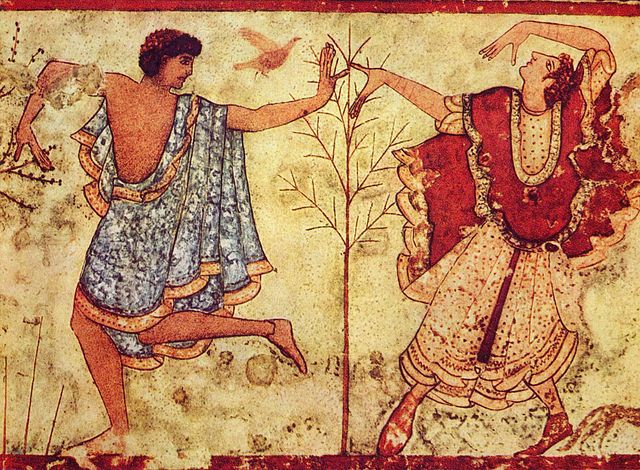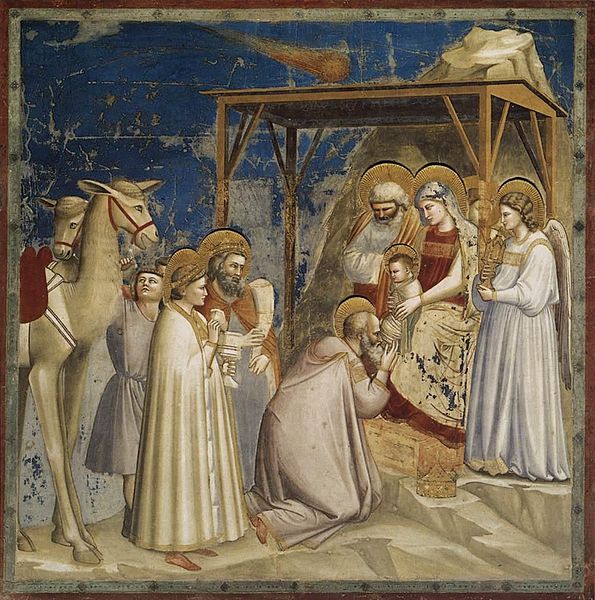The Creation of Adam, also known as The Creation of Man, is a fresco painting by Italian artist Michelangelo, which forms part of the Sistine Chapel's ceiling, painted c. 1508–1512. It illustrates the Biblical creation narrative from the Book of Genesis in which God gives life to Adam, the first man. The fresco is part of a complex iconographic scheme and is chronologically the fourth in the series of panels depicting episodes from Genesis.
The Creation of Adam
Michelangelo painted the ceiling of the Sistine Chapel; the work took approximately four years to complete (1508–1512).
God (right) is depicted as a white-bearded man.
Adam
Fresco is a technique of mural painting executed upon freshly laid ("wet") lime plaster. Water is used as the vehicle for the dry-powder pigment to merge with the plaster, and with the setting of the plaster, the painting becomes an integral part of the wall. The word fresco is derived from the Italian adjective fresco meaning "fresh", and may thus be contrasted with fresco-secco or secco mural painting techniques, which are applied to dried plaster, to supplement painting in fresco. The fresco technique has been employed since antiquity and is closely associated with Italian Renaissance painting.
The Creation of Adam, a detail of the fresco Sistine Chapel ceiling by Michelangelo
Etruscan fresco. Detail of two dancers from the Tomb of the Triclinium in the Necropolis of Monterozzi 470 BC, Tarquinia, Lazio, Italy
A Roman fresco of a young man from the Villa di Arianna, Stabiae, 1st century AD.
Fresco by Giotto, Scrovegni Chapel in Padua. Sky and blue mantle of Maria were painted a secco, and large part of the painting is now lost








